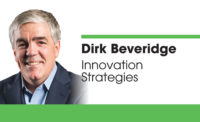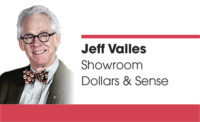Several years ago, Thomas Friedman of the New York Times wrote a two-part article titled “Average is over.” Think about the title. Average is over. What was his message?
For more and more jobs, average is over “thanks to the merger of and the advances in globalizations and the information technology revolution,” he says. Friedman tells us every boss now has cheaper and easier access to more above-average software, labor and cheap genius than ever before.
Here is the key. He then reminds us just doing a job in an average way will not return an average lifestyle any longer. There is not a good job today that does not require more and better education to get it, to hold it or to advance it.
And as a result, I believe we must think about how to unleash the potential of our organization. How do we unleash the potential that each individual within our organization has?
We must think culture before strategy. One more time, we must think culture before strategy. Harvard Business Review reminds us that culture trumps strategy every time. Fast Company magazine takes a similar angle, telling us culture eats strategy for lunch.
You remember Jim Collins in the amazing book “Built to Last?” In that book Collins says his research shows organizations that are driven by purpose and values outperformed the general market 15 to 1 — culture before strategy.
There is more! Harvard Business School’s John Kotter, writing in his book “Leading Change,” found in his research that firms with strong adaptive cultures based on shared values significantly outperformed firms with weak values and neutral cultures. He goes on in his findings to note revenue grew more than four times faster for these firms with strong, adaptive cultures.
Kotter found that job creation for these companies was seven times higher and, of course, profit performance was significantly higher as well.
Culture before strategy, but this isn’t just for Fast Companies, Harvard Business Review, Jim Collins or John Kotter. Let’s take a look at our distribution business.
Industry examples of excellence
Over the last 18 months, I’ve learned a ton from Pennsylvania-based distributor APR Supply. Scott Weaver is the amazing president and CEO of APR. Unleashing the company’s potential is top of mind for Weaver and his team. In fact, they quantify and qualify what they mean by unleashing potential of the organization by having the goal of doubling sales every five years. And here’s the thing, they do it.
How? What Weaver will tell you is that an innovative, strong culture will beat a smart strategy any day of the week. It doesn’t stop there.
Let’s take a look at Chicago-based Berlin Packaging, a distributor that calls itself a hybrid packaging supplier of rigid packaging. The financial performance of what has been unleashed at Berlin is amazing. When Andrew Berlin bought the company in 1988, the company was valued at $11.5 million. In recent times the company’s valuation has skyrocketed to nearly $2 billion. They unleashed the financial performance of the organization. The question is, how?
When you sit down with Berlin, one of the most intelligent and best business leaders I’ve ever had a chance to work with and to learn from, he tells you this:
“It’s not because we have some emerging technology. It’s not because we have some special idea that nobody else could figure out,” he says. “Our secret weapon, and not so secret but hard to achieve, is we have the best people and the best culture.”
He goes on to tell us, “The approach we took at Berlin when building the company was, let’s do the kind of things necessary to get to that size.”
And here is the important part. “However, let’s not focus on the number,” Berlin adds. “Let’s focus on behaviors. That’s really been an important part of the culture. If you are able to build a company with the right kind of culture and behavior with employees that trust each other and are willing to share common goals, you are going to be unbeatable.”
Culture before strategy. Here is a quick framework you can think about to unleash the potential of the individuals and your company by putting culture before strategy. This framework I’ve uncovered says culture begins with belief. What do we believe in as an organization? We have to think about it, we have to articulate it and we have to communicate it. We have to define what we believe in as an organization.
That belief then turns into behaviors that we are going to ask of every employee, from the CEO to the brand-new intern. What are the behaviors that we are going to ask of everybody in this organization that become nonnegotiable? If you are going to work for us, you are going to believe in what we believe in and you are going to behave and bring the skills and the behaviors that allow that belief to live.
The belief leads to behaviors and then the behavior leads to a commitment because what you and I know is that holding ourselves to what we believe, holding ourselves to the behaviors, we all step back at times.
We are going to be challenged and we must ask ourselves, “Are we truly committed to what we believe in? Are we truly committed to the behaviors we say are important?”
Once we hold firm to that commitment, it will then drive the results seen by the likes of APR Supply, Berlin Packaging and others that outperform the market.






